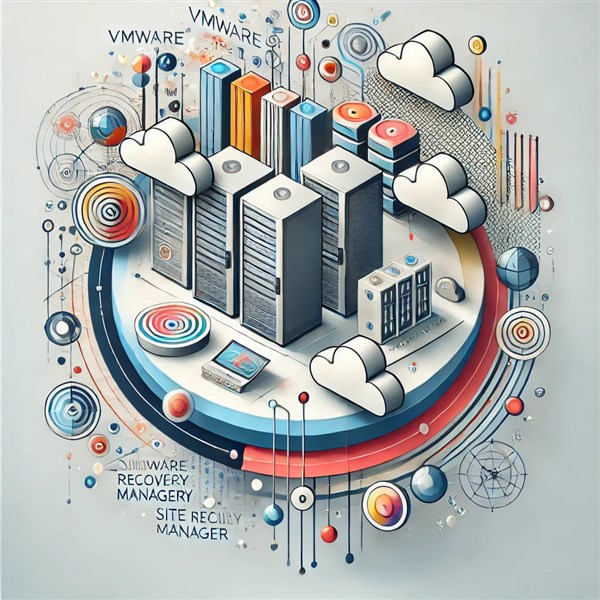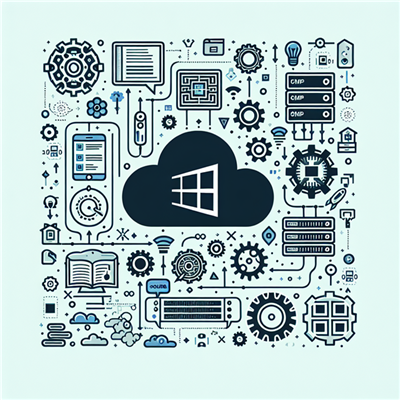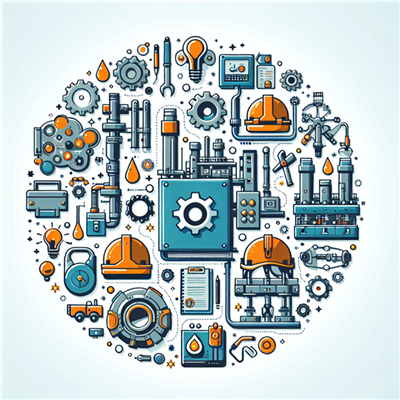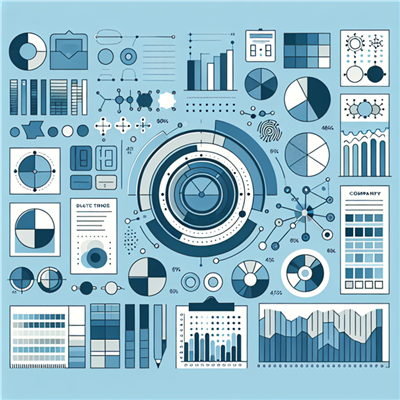
In today’s digital landscape, where data integrity and availability are essential, disaster recovery (DR) tools like VMware Site Recovery Manager (SRM) play a vital role. VMware SRM is specifically designed to simplify and automate DR processes, reducing downtime and helping companies maintain business continuity. This blog explores the top features of VMware SRM, including automated orchestration, non-disruptive testing, and seamless failback, and highlights how they strengthen disaster recovery strategies.
Top Features of VMware Site Recovery Manager
1. Automated Orchestration
VMware SRM’s automated orchestration simplifies disaster recovery by automating the recovery workflows required during an outage. This is crucial because, during a disaster, manual steps can increase recovery time and lead to errors that might exacerbate downtime. Automated orchestration enables IT teams to quickly execute recovery processes, ensuring minimal disruption.
Key Benefits:
- Reduced Downtime: SRM ensures that recovery steps are completed swiftly, minimizing downtime.
- Error Reduction: Automation reduces the likelihood of human error, which is especially vital under stressful conditions.
- Consistency: Automated processes ensure a consistent recovery sequence, crucial for compliance and standardization.
With automated orchestration, organizations can have a clear, pre-defined recovery process that is executed automatically, reducing dependency on manual interventions and enhancing reliability.
2. Non-Disruptive Testing
Testing is a fundamental part of any disaster recovery plan, yet it is often neglected due to concerns about disruption. VMware SRM solves this problem with non-disruptive testing, allowing organizations to verify their recovery plans without interrupting production systems. SRM creates an isolated environment for testing purposes, enabling full testing of DR workflows.
Key Benefits:
- Confidence in Recovery Plans: Regular testing helps verify that the DR plan will work effectively in a real disaster.
- Improved Compliance: Many industries have compliance standards requiring periodic DR testing. SRM facilitates these requirements with minimal disruption.
- Risk Mitigation: By identifying potential issues during tests, organizations can improve their recovery plans and mitigate risks.
Non-disruptive testing not only ensures the viability of recovery plans but also empowers IT teams with the assurance that they are prepared for unexpected incidents.
3. Seamless Failback
Failback, or returning operations to the original production site after a disaster, is often as challenging as the initial failover to a backup site. VMware SRM simplifies this process by providing seamless failback capabilities, ensuring smooth transition of workloads back to the primary environment.
Key Benefits:
- Smooth Transition: SRM’s failback process makes it easy to revert operations without disrupting ongoing workflows.
- Minimized Downtime During Recovery: The seamless failback process reduces downtime, ensuring that the transition back to production is as smooth as possible.
- Business Continuity: With SRM’s automated failback features, organizations can quickly resume normal operations after an incident, minimizing impact on business continuity.
Seamless failback is a crucial component of VMware SRM’s offerings, enabling organizations to not only switch to a DR site quickly but also to resume regular operations smoothly and efficiently once the disaster is resolved.
4. Customizable Recovery Plans
VMware SRM allows for the creation of customized recovery plans to suit specific organizational requirements. This flexibility enables IT administrators to structure DR processes according to the needs of various applications and systems.
Key Benefits:
- Tailored Recovery Processes: Different applications have different recovery point and time objectives, and SRM accommodates these variations.
- Integration with Business Needs: Custom recovery plans enable IT teams to align DR efforts with business priorities.
- Scalability: Customized plans make it easier to scale DR efforts as the organization grows and requires more extensive DR strategies.
Customizable recovery plans ensure that VMware SRM can adapt to any enterprise’s unique needs, providing flexibility and scalability as those needs evolve.
5. vSphere Replication
VMware SRM integrates with vSphere Replication, a built-in solution for replicating VMs from one site to another. This feature ensures that critical data and applications are continuously mirrored, ready to be restored in the event of a disaster.
Key Benefits:
- Reduced Recovery Times: With vSphere Replication, data is continuously synchronized, allowing quick recovery.
- Cost-Effectiveness: Since it is a built-in solution, vSphere Replication is often more affordable than third-party replication solutions.
- Efficiency in Data Transfer: VMware vSphere Replication efficiently replicates only changed data, reducing the bandwidth required and enhancing speed.
With vSphere Replication, VMware SRM offers a reliable way to safeguard data, ensuring that the most recent data is available during recovery.
6. Policy-Based Management
VMware SRM’s policy-based management simplifies recovery workflows by allowing administrators to create policies that automatically apply recovery plans. This enables teams to align recovery steps with organizational policies without manually configuring each step.
Key Benefits:
- Consistency: Policies enforce standard practices, ensuring that recovery plans are consistently applied.
- Ease of Management: Policy-based automation simplifies management, reducing the workload on IT administrators.
- Streamlined Compliance: Policies can be designed to meet compliance requirements, making audits easier to manage.
Policy-based management streamlines disaster recovery for large organizations, ensuring that recovery processes align with both operational and regulatory requirements.
7. Support for Multi-Site Configurations
For organizations operating across multiple locations, VMware SRM supports multi-site configurations, allowing for replication and recovery across geographically dispersed data centers. This feature enhances business continuity for distributed organizations.
Key Benefits:
- Increased Resilience: Multi-site support means organizations can continue operations even if one site experiences a disaster.
- Greater Flexibility: VMware SRM’s multi-site capabilities accommodate various disaster recovery configurations, offering flexibility for complex infrastructures.
- Centralized Management: Managing multiple sites through a single interface simplifies DR administration, making it easier to coordinate recovery efforts.
Multi-site configurations empower organizations to set up robust DR solutions that provide reliable coverage across multiple regions.
8. Detailed Reporting and Compliance Tracking
VMware SRM offers robust reporting and compliance tracking capabilities, enabling organizations to monitor the effectiveness of their disaster recovery plans and maintain compliance with industry regulations.
Key Benefits:
- Compliance Maintenance: SRM’s detailed reporting simplifies compliance audits, helping organizations meet regulatory requirements.
- Data-Driven Decision Making: Reports provide insights into DR performance, enabling data-driven improvements.
- Improved Transparency: Comprehensive reports offer transparency into recovery processes, ensuring that stakeholders are informed.
With detailed reporting, organizations can maintain transparency in DR efforts and optimize their recovery plans over time.
Conclusion
VMware Site Recovery Manager (SRM) is a powerful tool for ensuring business continuity through automated disaster recovery. By offering automated orchestration, non-disruptive testing, seamless failback, and robust multi-site support, SRM simplifies the DR process, enabling organizations to recover faster, reduce downtime, and protect data integrity. Whether it’s supporting customized recovery plans, integrating with vSphere Replication, or enabling detailed reporting, VMware SRM provides essential tools that organizations need to protect their operations from unexpected disruptions.
For businesses prioritizing uptime and data protection, VMware SRM provides a comprehensive solution that not only enhances disaster recovery but also improves overall resilience and compliance. This makes VMware SRM a valuable investment for any organization looking to bolster its disaster preparedness and minimize the impact of potential incidents on business operations.
As a leading IT training company, Koenig Solutions is committed to providing top-notch education in the latest technologies. With the VMware SRM training courses, you can equip yourself with the knowledge and skills to optimise your business' recovery processes and ensure business continuity in the face of any disaster.

Certification.jpgM.jpg)





COMMENT